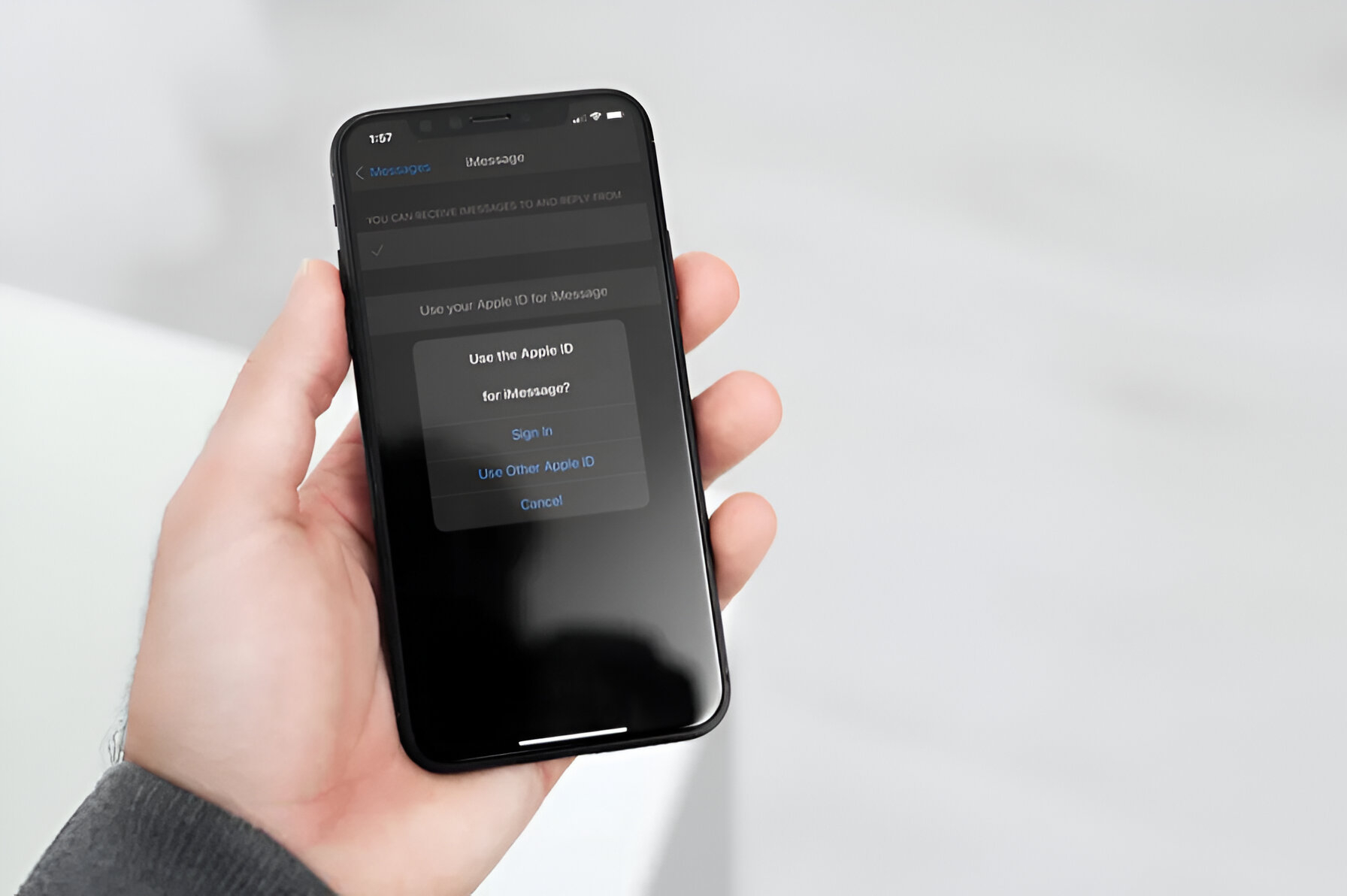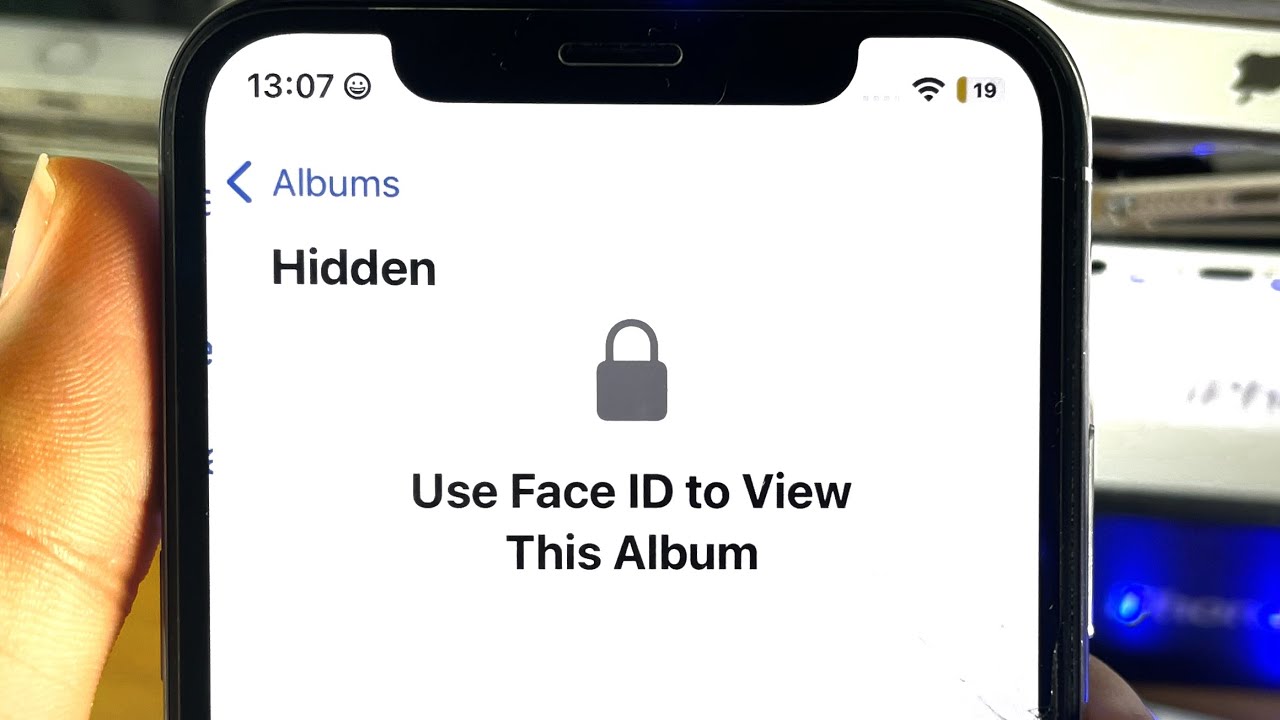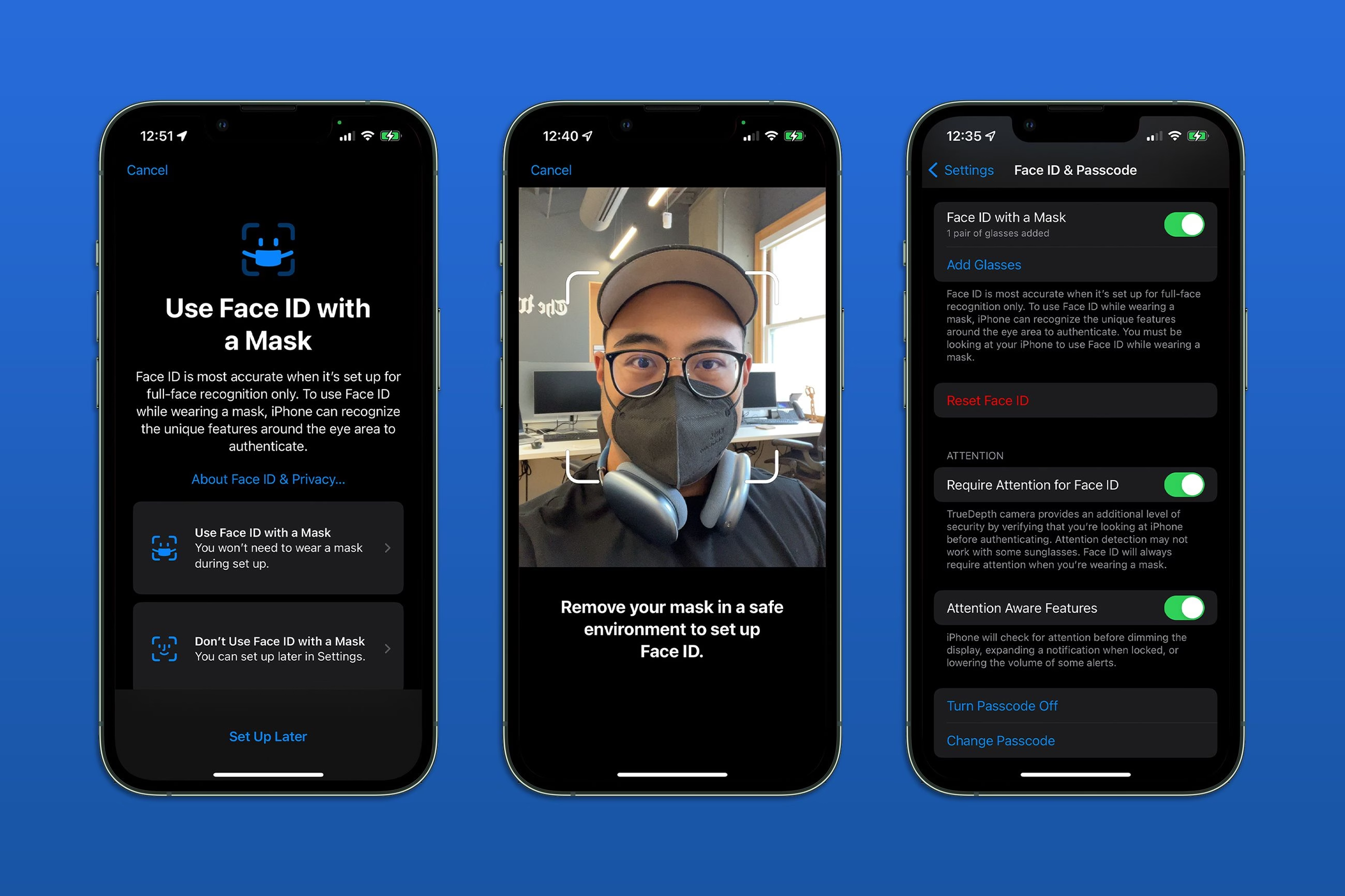Introduction
Welcome to the digital era, where convenience and security go hand in hand. With the rapid advancement of technology, biometric authentication has become increasingly popular. One such feature is Face ID, a facial recognition system that offers a secure and effortless way to authenticate users.
Face ID, developed by Apple, allows users to unlock their devices, make secure transactions, and access various applications with just a glance. This cutting-edge technology analyzes facial features, creating a mathematical representation of the user’s face, ensuring enhanced security and a seamless user experience.
As an app developer or owner, integrating Face ID into your application can provide numerous benefits. By harnessing the power of this robust authentication system, you can elevate your app’s security, streamline user access, and offer an intuitive and convenient login experience.
In this article, we will guide you through the process of adding Face ID to your app, enabling you to stay ahead of the curve and provide your users with a superior level of security and convenience.
What is Face ID?
Face ID is an advanced facial recognition technology developed by Apple. It utilizes the front-facing TrueDepth camera system, which consists of an infrared camera, flood illuminator, and dot projector, to create a detailed 3D map of the user’s face. This map is then securely stored and used to authenticate the user when interacting with the device or specific applications.
Unlike traditional methods such as PIN codes or fingerprint scanners, Face ID offers a more secure and convenient way to verify the user’s identity. It analyzes various facial features, including the contours of the face, the distance between the eyes, and even depth information, making it highly accurate and resistant to spoofing attempts.
Face ID is designed to work in various lighting conditions and can adapt to changes in the user’s appearance, such as wearing glasses, growing a beard, or even aging. It constantly learns and updates its facial recognition model, ensuring reliable and consistent performance over time.
Additionally, Face ID incorporates machine learning algorithms to continuously improve its accuracy and adapt to unique user attributes. This means that the more frequently the user interacts with Face ID, the better it becomes at recognizing their face, offering a seamless and intuitive authentication experience.
One of the key advantages of Face ID is its effortless user experience. Users can simply glance at their device, and Face ID will instantly recognize and authenticate them. This eliminates the need for manual input, making it faster and more convenient to access applications, unlock devices, or authenticate transactions.
Furthermore, Face ID enables secure facial recognition authentication for third-party applications. Developers can integrate Face ID into their apps, providing an additional layer of security and convenience to users. By leveraging this technology, app developers can enhance user trust and satisfaction, knowing that their data and information are protected by a highly secure biometric authentication mechanism.
Why should you add Face ID to your app?
Integrating Face ID into your app can bring numerous benefits to both you as the developer and your users. Here are some compelling reasons why you should consider adding Face ID to your app:
- Enhanced security: Face ID provides a high level of security for user authentication. By using advanced facial recognition technology, it ensures that only authorized individuals can access the app and its features. This can protect sensitive user information, secure transactions, and mitigate the risk of unauthorized access.
- Streamlined user experience: Face ID offers a seamless and effortless authentication process for users. With just a glance, users can unlock your app, sign in, and access its features instantly. This eliminates the need for remembering and entering complex passwords, enhancing the overall user experience and reducing friction during the login process.
- Competitive advantage: Integrating Face ID into your app can give you a competitive edge in the market. Users are increasingly prioritizing convenience and security, and by offering Face ID authentication, you demonstrate that your app is at the forefront of technological advancements, earning trust and attracting more users.
- Stronger data protection: Face ID adds an extra layer of protection to the user’s personal data within your app. With the facial recognition technology, you can ensure that only the authorized user can access and interact with sensitive information. This builds trust and reassurance among your users, encouraging them to use your app for tasks that involve confidential data.
- Ease of integration: Apple provides comprehensive documentation and resources for developers to seamlessly integrate Face ID into their apps. With the support of the Apple developer community, you can quickly implement Face ID authentication and enhance the security and convenience of your app.
By incorporating Face ID into your app, you can create a more secure and user-friendly environment that resonates with today’s tech-savvy and security-conscious audience. This not only elevates the user experience but also positions your app as a trusted and reliable platform in a competitive market.
Step 1: Check Device Compatibility
Before implementing Face ID authentication in your app, it is essential to ensure that the user’s device supports this feature. While Face ID is available on newer iPhone and iPad models, it is crucial to be aware of the specific requirements.
First and foremost, the device must possess the necessary hardware components to enable Face ID. This includes the TrueDepth camera system, which is currently available on iPhone X, XS, XR, 11, 11 Pro, 11 Pro Max, and iPad Pro (third generation and later).
To programmatically check if Face ID is supported on the user’s device, you can use the `Biometric` framework provided by Apple. This framework allows you to determine the biometric types supported by the device, such as Face ID or Touch ID, and retrieve specific information about the available biometric authentication options.
Furthermore, it is crucial to consider the minimum iOS version required for Face ID integration. Face ID requires iOS 11 or later on the user’s device to function properly. Therefore, make sure to check the minimum iOS version required by your app and inform your users accordingly.
Additionally, consider the user experience implications. While Face ID offers a seamless and convenient authentication process, it is essential to consider alternative authentication methods for devices that do not support Face ID or when the user prefers not to use it. In such cases, you can offer fallback options, such as password-based login or Touch ID (if available).
By performing this compatibility check, you can ensure that the user’s device supports Face ID before proceeding with the implementation. This helps to prevent any inconveniences or errors that may arise due to incompatible devices and ensures a smooth and successful integration of Face ID authentication into your app.
Step 2: Enable Face ID for Your App
Once you have confirmed that the user’s device supports Face ID, the next step is to enable Face ID for your app. Enabling Face ID ensures that your app can utilize the facial recognition capabilities for authentication purposes.
To enable Face ID in your app, you need to make the appropriate changes in your app’s project settings. Follow these steps:
- Open your app’s project in Xcode.
- Navigate to the project settings by clicking on the target for your app.
- Select the “Signing & Capabilities” tab.
- Click on the “+” button under the “Capabilities” section.
- Select “Face ID” from the list of available capabilities.
- Save your changes.
Enabling Face ID in your app’s capabilities ensures that your app is granted the necessary permissions and entitlements to use Face ID for authentication purposes.
It is important to note that enabling Face ID in your app’s capabilities does not automatically integrate Face ID authentication. It simply enables the use of Face ID within your app. The actual integration and implementation of Face ID authentication will be covered in the next step.
After enabling Face ID, it is recommended to thoroughly test your app to ensure that Face ID authentication is functioning as expected. This includes verifying that the app prompts the user for facial recognition and responds appropriately based on the authentication status.
By enabling Face ID for your app, you lay the foundation for incorporating Face ID authentication into your app’s login process. This sets the stage for a more secure and convenient user experience, enhancing the overall usability and trustworthiness of your app.
Step 3: Implement Face ID Authentication
Now that you have enabled Face ID for your app, it’s time to implement Face ID authentication. This step involves integrating the necessary code and APIs to leverage the facial recognition capabilities of Face ID within your app.
Here are the key steps to implement Face ID authentication:
- Import the necessary frameworks: To utilize Face ID APIs, you need to import the `LocalAuthentication` framework into your app’s codebase.
- Handle biometric authentication: Use the `LAContext` class from the `LocalAuthentication` framework to handle the authentication process. Implement logic to check if Face ID authentication is available on the device and if the user has set up Face ID.
- Prompt for Face ID authentication: Display a prompt to the user, requesting Face ID authentication. This can be done by calling the `evaluatePolicy` method on the `LAContext` object and passing the appropriate evaluation policy (e.g., `.deviceOwnerAuthenticationWithBiometrics`).
- Handle authentication results: Implement the necessary logic to handle the results of the Face ID authentication process. You can provide appropriate feedback to the user based on whether the authentication was successful or not.
- Handle error cases: Handle any potential errors or exceptions that may occur during the Face ID authentication process. This ensures a smooth and seamless user experience, even in the event of authentication failures or errors.
It is important to follow Apple’s guidelines and best practices when implementing Face ID authentication in your app. Ensure that the authentication process is streamlined, intuitive, and informative for users. Display appropriate error messages and instructions when necessary to guide users through the authentication process.
Once you have implemented Face ID authentication in your app, be sure to thoroughly test it on various devices to ensure its functionality and reliability. Test different scenarios, such as incorrect authentication attempts, to verify that your app responds appropriately and provides a seamless user experience.
By implementing Face ID authentication in your app, you provide users with a secure, fast, and convenient authentication method that enhances the overall user experience. Face ID authentication offers a modern and futuristic approach to user verification and demonstrates your commitment to maintaining high-security standards within your app.
Step 4: Test Face ID Integration
After implementing Face ID authentication in your app, it is crucial to thoroughly test its integration to ensure its functionality, compatibility, and user experience. Testing helps identify any potential issues or shortcomings and provides an opportunity to refine and optimize the Face ID integration.
Here are some key aspects to consider when testing Face ID integration:
- Verify authentication flow: Test the entire authentication flow from start to finish. Ensure that the Face ID prompt is displayed correctly, the user’s face is recognized and authenticated accurately, and appropriate UI feedback is provided.
- Test different scenarios: Test various scenarios to ensure that your app handles different outcomes correctly. Test successful Face ID authentication, as well as failure cases, such as incorrect authentication attempts or when Face ID is not available.
- Test on different devices: Test Face ID integration on different iPhone and iPad models that support Face ID. This helps ensure that the integration works seamlessly across a range of devices and form factors.
- Handle edge cases: Test edge cases, such as low light conditions, different angles of the user’s face, or instances when the user is wearing accessories (e.g., glasses or hats). Ensure that Face ID authentication still performs accurately and reliably in these scenarios.
- Validate error handling: Test error handling scenarios, such as when Face ID is temporarily disabled or unavailable. Ensure that your app provides appropriate error messages and instructions to guide the user.
- Consider usability and performance: Evaluate the overall usability and performance of Face ID integration. Determine if the authentication process is intuitive, seamless, and fast. Identify any delays or performance issues that may affect the user experience.
During the testing phase, gather feedback from users and consider their suggestions or reported issues. This feedback can be instrumental in fine-tuning the Face ID integration and addressing any potential bugs or user experience enhancements.
By thoroughly testing Face ID integration, you can ensure that your app delivers a reliable, secure, and user-friendly authentication method. Testing helps maintain a positive user experience and builds trust among your app’s users, ultimately contributing to the success and adoption of your app.
Conclusion
Integrating Face ID authentication into your app can significantly enhance both the security and user experience. With its advanced facial recognition capabilities, Face ID offers a seamless and convenient way to authenticate users, ensuring only authorized individuals gain access to your app’s features and data.
Throughout this guide, we’ve explored the steps involved in adding Face ID to your app. From checking device compatibility to enabling Face ID, implementing authentication logic, and thorough testing, each step is crucial to ensure a successful and reliable integration.
Face ID provides numerous benefits, including enhanced security, streamlined user experience, a competitive advantage, stronger data protection, and ease of integration. By incorporating this robust authentication technology, you demonstrate your commitment to your users’ privacy and deliver a modern and secure app experience.
Remember that user feedback and continuous testing are essential components of maintaining a robust Face ID integration. Regularly collect feedback, address any reported issues promptly, and stay up-to-date with Apple’s guidelines and best practices to ensure optimal performance and user satisfaction.
As technology continues to advance, biometric authentication methods like Face ID are becoming the industry standard. By leveraging this innovative technology in your app, you position yourself at the forefront of security and convenience, ultimately attracting more users and fostering their trust.
So, take the next step and start implementing Face ID authentication in your app. Embrace the future of secure and effortless authentication, and provide your users with an exceptional app experience they won’t forget.

























